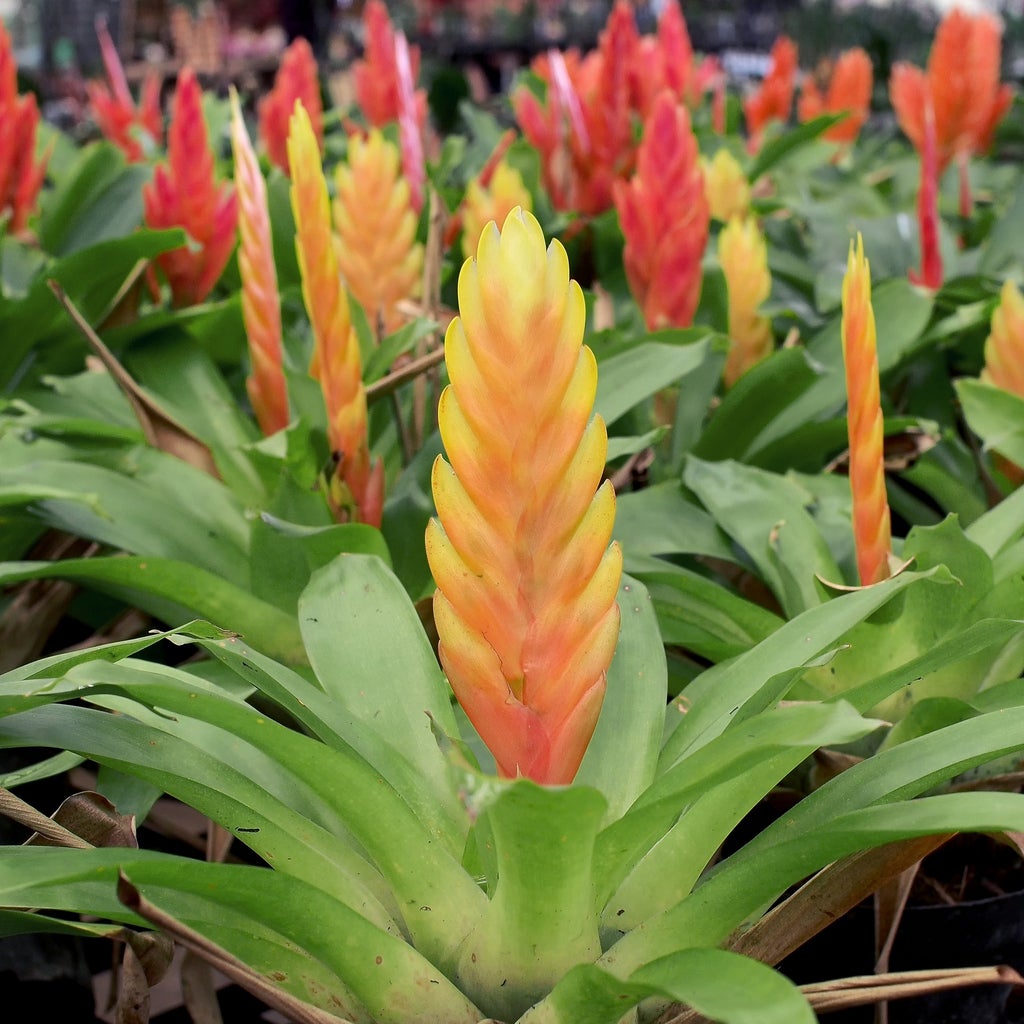Care Of Vriesea Plants: How To Grow Flaming Sword Plants Indoors


The flaming sword houseplant, Vriesea splendens, is one of the most common bromeliads used for indoor decoration and is one of the showiest. You may already have one in your houseplant collection and wonder how to grow flaming sword plants. Vriesea flaming sword info says there are 250 varieties, providing a range of color in both foliage and colorful bracts. The flaming sword houseplant is commonly named for its red bracts that appear when the plant is three to five years old. It is an epiphyte in its native habitat.
How to Grow Flaming Sword Plants
The flaming sword houseplant grows best in a one to one mix of regular potting soil and orchid mix. Special soil for bromeliads is sometimes available at the local garden center. Vriesea flaming sword info indicates a special display for the plant can eliminate the need for growing in soil. Attach the plant to a slab or large piece of bark reminiscent of its native habitat to provide an interesting display.
Care of Vriesea Plants
Locate the flaming sword houseplant in bright, indirect light indoors. Allow some direct morning or evening sun in winter, if possible. Care of Vriesea plants includes keeping them in temperatures above 60 degrees F. (16 C.), but no warmer than 80 degrees F. (27 C.).
As with other bromeliads, the flaming sword houseplant has a cup or tank in the middle of the plant. Keep this cup filled with water. Vriesea flaming sword info says watering for this plant should be minimal. Soil should be no more than lightly moist and never allowed to completely dry out.
The top half of the plant can be allowed to dry out between waterings. This bromeliad does, however, like high humidity. Mist the plant frequently or place it on a pebble tray indoors or near the company of other houseplants that transpire. Fifty percent humidity is necessary for optimum performance of Vriesea flaming sword.
More Vriesea Flaming Sword Info
The flaming sword houseplant blooms just once and begins to decline, but it provides more plants before passing away, as small offsets called pups can be removed from the mother plant. Sever pups when they are one-half to two-thirds the size of the mother plant. Thus, the process begins again. In three to five years you can expect blooming bracts on the babies and another round of pups to propagate.
Gardening tips, videos, info and more delivered right to your inbox!
Sign up for the Gardening Know How newsletter today and receive a free copy of our e-book "How to Grow Delicious Tomatoes".

Becca Badgett was a regular contributor to Gardening Know How for ten years. Co-author of the book How to Grow an EMERGENCY Garden, Becca specializes in succulent and cactus gardening.
-
 Looking For Plants To Give You The Soft And Fuzzies? Try These 5 Fuzzy Leaf Plant Options
Looking For Plants To Give You The Soft And Fuzzies? Try These 5 Fuzzy Leaf Plant OptionsLovers of texture, drama, silver foliage and tactile plants will adore these special sensory garden additions. These fuzzy leaf plant options will leave you all aglow
By Susan Albert
-
 Get Ready For A Summer Of Hummers! Grow These Full Sun Hummingbird Plants and Flowers
Get Ready For A Summer Of Hummers! Grow These Full Sun Hummingbird Plants and FlowersIf you’re lucky enough to enjoy a sunny backyard, make sure you are maxing out on your pollinator opportunities and grow these full sun hummingbird plants and flowers
By Tonya Barnett